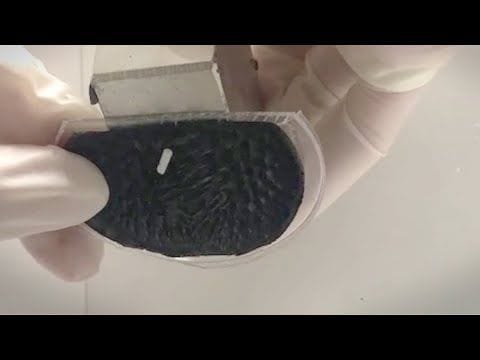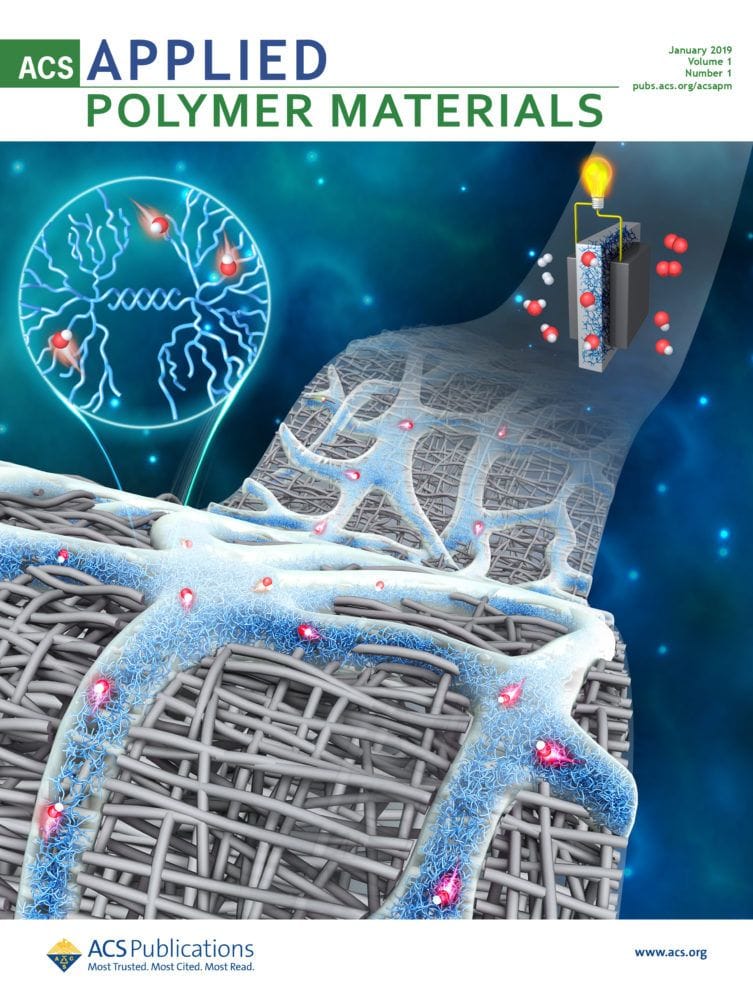This article is based on a recent paper published in ACS Applied Polymer Materials, “Soft Tunable Gelatin Robot with Insect-like Claw for Grasping, Transportation, and Delivery.” Read the full paper here Research recently published in ACS Applied Polymer Materials describes a soft, magnetic millirobot inspired by the walking and grabbing capabilities of insects. But what […]

This article is based on a recent paper published in ACS Applied Polymer Materials, “Soft Tunable Gelatin Robot with Insect-like Claw for Grasping, Transportation, and Delivery.”
Research recently published in ACS Applied Polymer Materials describes a soft, magnetic millirobot inspired by the walking and grabbing capabilities of insects. But what are we going to do with a robotic caterpillar?
Millirobots are small-scale flexible robots with unique structures that allow them to roll or inch themselves forward, making them useful for applications such as targeted drug delivery, minimally invasive surgery, small-scale manipulations, and microfluidic devices. This may include work in hard-to-reach areas such as the gastrointestinal tract, which not only requires movement and navigation using a magnetic field, but also ease of removal or degradation. Unlike traditional rigid robots, soft millirobots do not have motors or joints that allow them to perform complex tasks, and therefore need special designs and structures to achieve advanced operations. 1-10
Conventional small-scale soft magnetic robots are usually made of polydimethylsiloxane or silicone rubber. While these materials are convenient for both fabrication and control, they are non-degradable, and their fixed mechanical characteristics limit fine-tuning of the robot’s properties for various purposes. However, researchers have now created a millirobot out of soft, biodegradable materials that can grab, roll, and climb—and then dissolve after its job is done. Inspired by the grasping movement of insects and mammals, they have been able to achieve independent control and demonstrate cargo transportation by a series of continuous operations such as nipping, rolling, opening, flipping, and releasing.11
The researchers developed this caterpillar-style millirobot using a gelatin solution mixed with microparticles of iron oxide. They achieved strength and solidity by cooling and then soaking the hydrogel in ammonium sulfate to cause cross-linking. Placing the material above a permanent magnet caused the microparticles to push the gel outwards, forming insect-like legs along the lines of the magnetic field. Because the iron oxide microparticles form magnetic chains within the gel, moving a magnet caused the legs to bend and produce a claw-like grasping motion.
In experiments, the material gripped a 3D-printed cylinder and a rubber band, and it was able to carry each to new locations. The team also tested the millirobot’s ability to deliver a drug by loading its legs with a dyed solution and rolling it through a stomach model. Once at its destination, the robot unfurled and released the dye with the strategic use of magnets.
Importantly, the millirobot easily degraded in water in just 48 hours, leaving behind only the iron oxide particles—which have no magnetic torque once the magnetic field is removed. The researchers say that the new millirobot could pave the way for new methods of drug delivery and other biomedical applications.
Watch the video around this research created by the ACS Science Communications team:
Read the full press release on acs.org
Read the original article from ACS Applied Polymer Materials
Read more about millirobots in ACS journals
Solid–Liquid State Transformable Magnetorheological Millirobot
Zhipeng Chen, Weibin Lu, Yuanyuan Li, Pengfei Liu, Yawen Yang, and Lelun Jiang
DOI:10.1021/acsami.2c05251
Magnetic Soft Materials and Robots
Yoonho Kim and Xuanhe Zhao
DOI: 10.1021/acs.chemrev.1c00481
Robust, Healable, Self-Locomotive Integrated Robots Enabled by Noncovalent Assembled Gradient Nanostructure
Yuyan Wang, Gehong Su, Jin Li, Quanquan Guo, Yinggang Miao, and Xinxing Zhang
DOI: 10.1021/acs.nanolett.2c01375
Visible Light-Driven Jellyfish-like Miniature Swimming Soft Robot
Chao Yin, Fanan Wei, Shihan Fu, Zhushan Zhai, Zhixing Ge, Ligang Yao, Minlin Jiang, and Ming Liu
DOI: 10.1021/acsami.1c13975
Biodegradable Thermomagnetically Responsive Soft Untethered Grippers
Kunihiko Kobayashi, ChangKyu Yoon, Seung Hyun Oh, Jayson V. Pagaduan, and David H. Gracias
DOI: 10.1021/acsami.8b15646
References
- Sitti M, et al. Biomedical applications of untethered mobile milli/microrobots. Proc IEEE 2015;103:205–224.
- Yang X, et al. An agglutinate magnetic spray transforms inanimate objects into millirobots for biomedical applications. Sci Robot 2020;5:eabc8191.
- Nelson BJ, et al. Microrobots for minimally invasive medicine. Annu Rev Biomed Eng 2010;12:55–85.
- Hu W, et al. Small-scale soft-bodied robot with multimodal locomotion. Nature 2018;554:81–85.
- Lu H, et al. A bioinspired multilegged soft millirobot that functions in both dry and wet conditions. Nat Commun 2018;9:3944.
- Zheng Z, et al. Ionic shape-morphing microrobotic end-effectors for environmentally adaptive targeting, releasing, and sampling. Nat Commun 2021;12:411.
- Li G, et al. Transparent Magnetic Soft Millirobot Actuated by Micro-Node Array. Adv Mater Technol 2021;6:2100131.
- Zhang T, et al. Millimeter-Scale Soft Continuum Robots for Large-Angle and High-Precision Manipulation by Hybrid Actuation. Adv Intell Syst 2021;3:2000189.
- Liu JAC, et al. Photothermally and magnetically controlled reconfiguration of polymer composites for soft robotics. Sci Adv 2019;5:eaaw2897.
- Dong X, et al. Bioinspired cilia arrays with programmable nonreciprocal motion and metachronal coordination. Sci Adv 2020;6:eabc9323.
- Yang L, et al. Soft Tunable Gelatin Robot with Insect-like Claw for Grasping, Transportation, and Delivery. ACS Appl Polym Mater 2022;4(8):5431–5440.

